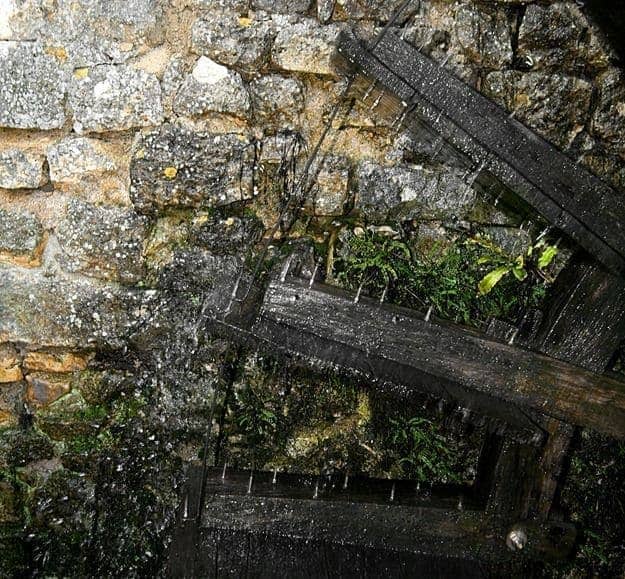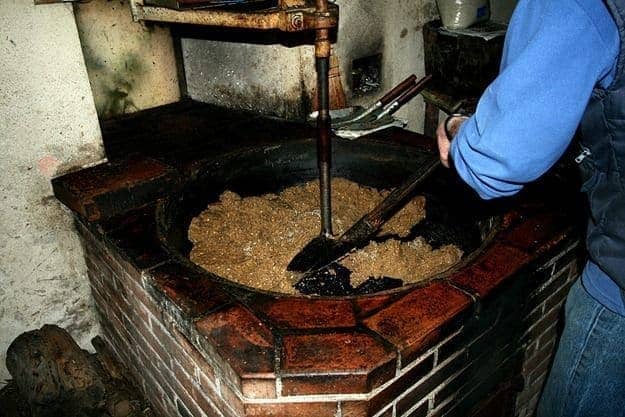Parts of rural France have some really old bits of industry lying around. One of the more common types of surviving building still in use today are the old mills that were used to create both flour and oil.
Of course, not all the mills that once dotted the landscape have survived intact. Many, whilst still technically classed as mills, no longer operate as such, having been turned into guest houses, or restaurants, or terribly good looking private accommodation. A water wheel stuck on the outside of your house being the ultimate water feature for the discerning property buyer.
So when you are invited to visit a still working version of one these mills, which has survived from the 17th century through revolution, Nazi occupation, economic crisis and a general lack of interest from the youth of today, you would jump at the chance.

We were recently invited on just such a trip by a local mill owning friend, so jump we did – excited about this opportunity to visit a part of rural French history.
To my mind, for some reason, mills are big places with giant sails on the outside. However, as this is France and not Holland, the majority of mills are water rather than wind powered. Thus the main giveaway that the place you are visiting is not just a house by a river is the giant waterwheel affixed to its external wall, which is responsible for powering the whole operation. Even in the nuclear powered France of today.
Stepping inside the Moulin de la Chaume for the first time, and greetings complete (everyone is terribly jovial in France, and much kissing is required), the first thing that hit us was the wonderful scent of gently toasting walnuts. This being a walnut oil mill.

Walnuts being crushed by the giant stone water powered wheel.
Some things I had not previously known about walnut oil production: it takes about 20 kilos of nuts to produce around 8 – 10 litres of oil. The walnuts need to be crushed to a fine goo, then warmed, then pressed. And walnut shelling is done by hand, during a giant walnut shelling party which involves much drinking. We sadly missed out on that part of the process.

After crushing, the walnuts are warmed to soften, then pressed for their oil.
This particular mill isn’t really a commercial operation. They make a small amount of walnut oil as an artisanal product for sale, but the main service they offer is oil production from your own walnuts.
Turn up with your sack of peeled nuts, leave with some bottles of aromatic oil, perfect for drizzling on salads. This seemed to be a very popular option, with beret wearing French people turning up very regularly to much kissing and joy, followed by much crushing and extracting, with excited peering at the wheel going round.
A real slice of French rural life, probably not much changed over the last couple of hundred years, other than the mode of transport now being petrol rather than hay powered.

The finished product!
As well as all the walnut oil creation paraphernalia, the mill was also home to a small scale flour mill. The really interesting part of this, as well as the various grain crushing, sifting, sorting and transporting devices, was the collection of flour bags that had accumulated over the life of the mill.
One in particular stood out, an all too recognisable symbol on an otherwise innocuous container.

And that was that for the mill visit. You can usually visit mills like this quite easily if you ring in advance to arrange a viewing. There is a website for the Federation des Moulins de France, which lists all the mills in France, when they were built, what they make, and if you can visit. If you’re interested in this sort of thing, I can highly recommend taking the time to pop along.

Leave a Reply